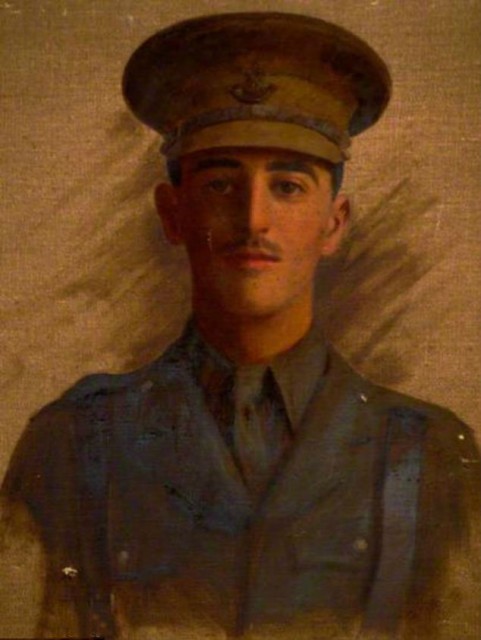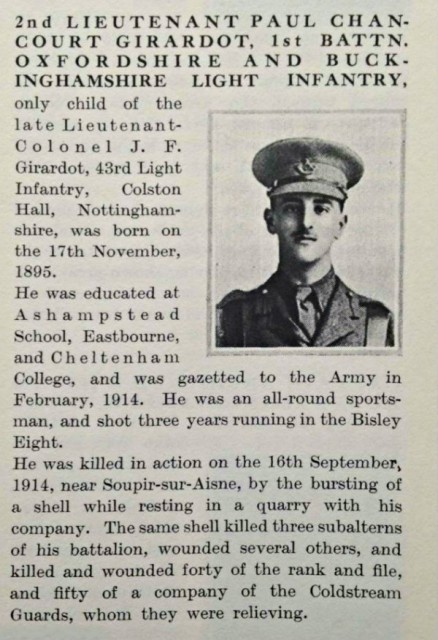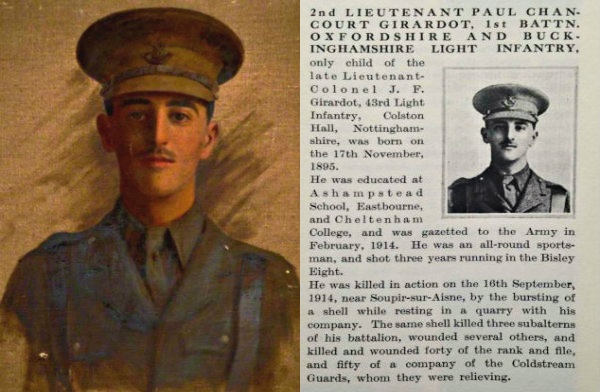The identity of the unknown WWI officer, which had hung in Wales’ Camarthen County Museum for years have finally been uncovered…one hundred years after his passing.
The oil painting of the unknown WWI officer had always held an air of mystery while it became part of the exhibit in the Camarthen County Museum. No one knew who he was nor had he survived the horrors of the WWI front lines.
However, the mystery was uncovered after an amateur historian posted a photo of the portrait of the WWI officer on the website Great War Forum. He, then, asked forum members for help in uncovering the identity of the unknown WWI officer.
Historians scoured through Great war documents following the said historian’s plea. Finally, while they were poring through obituaries in the wartime archive The Bond of Sacrifice, they chanced upon a photo of a young WWI officer which was very similar to the one in the oil painting.

The WWI officer was, then , identified as Second Lieutenant Paul Chancourt Giradot. WWI officer Giradot died at the tender age of 18. History buffs believe that it was his mother, Mary, who did the oil painting. It was her tribute to the tragic death of her son.
According to historical records, WWI officer Giradot died in the Great War’s second month. He perished when a German shell landed exactly inside the quarry he was in.
Furthermore, war records revealed that WWI officer Giradot served in the Oxford and Bucks Light Infantry. He was, then, killed on September 16, 1914 t Soupir.
Among the historians who worked together to identify the WWI officer was 49-year-old Great War aficionado Martin Gillott. The group who uncovered WWI officer Giradot’s identity was made up of four history experts who combined what they knew about war history and uniforms to get their answers.
Together, these four enthusiasts were able to recognize the cap badge, double shoulder straps made of leather and the button badge, which was on the lapel of the WWI officer in the portrait. They indicated that he was a Oxford and Bucks Light Infantry Second Lieutenant.
Meanwhile, the lack of military decorations or medals in the portrait led Mr. Gillott to conclude that the WWI officer painting was done during the early times of war. He was also able to deduce that the portrait was done as a memorial to a fallen WWI soldier.
Mr. Gillott, then, used the website of the Commonwealth War Graves Commission to make up a list of all the WWI soldiers and WWI officers who were killed in between August 1914 and June 1915. From this list, the profile of WWI officer Paul Chancourt Giradot literally jumped out.
According to Mr. Gillott, the oil portrait is the exact replica of the photograph on the obituary of the WWI officer.
War documents further showed that WWI officer Giradot had been the only son of Lieutenant Colonel John Francis Giradot and his wife, Mary. His mother originally came from Cardigan, West Wales. But when her son died during the Great War, she moved to Carmarthenshire.

The museum had named the portrait of the WWI officer as Portrait of an Unknown First World War Officer. But now that the identity of the WWI officer has been revealed, the exhibit had been renamed as Second Lieutenant Paul Chancourt Giradot (1895-1914).
While the museum holds no records showing when the WWI officer portrait came into their hands, it had been in their hands in the 1970s but did not know who he was that time.
Debbie Williams, the museum’s spokeswoman, stated they were thrilled about the outcomes of the said search. Now, the story of the WWI officer will be part of the stories and experiences the museum exhibits.
